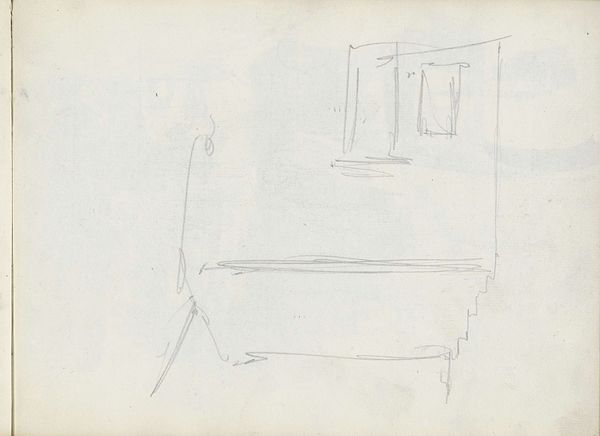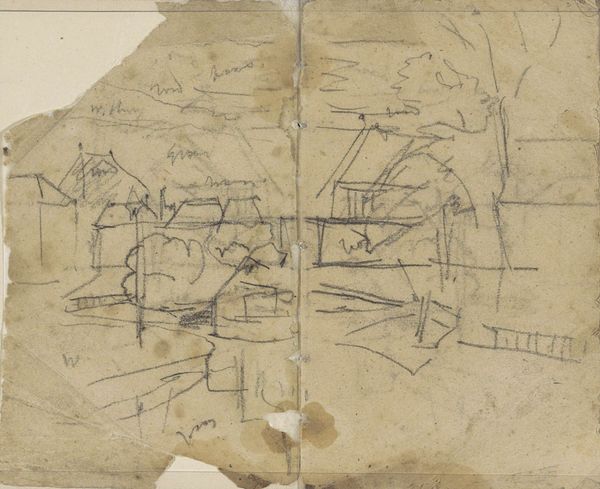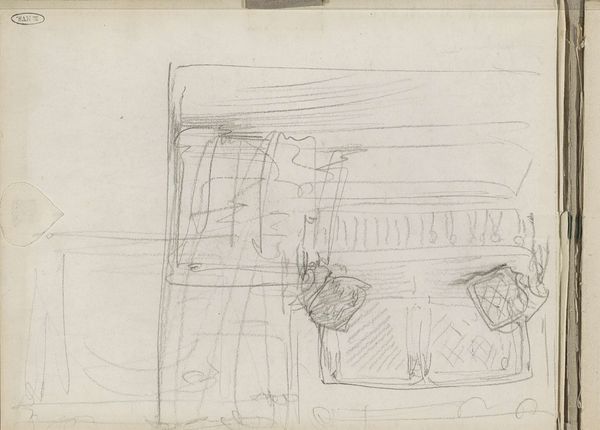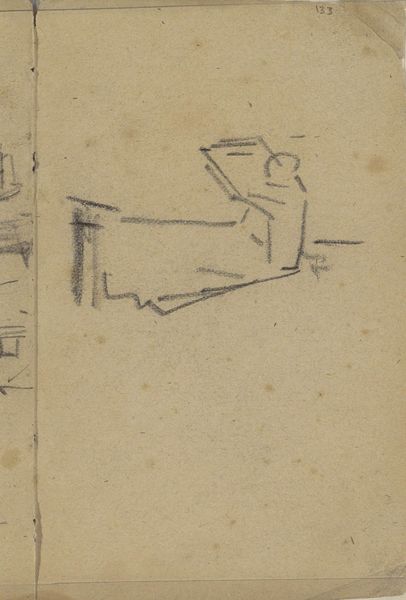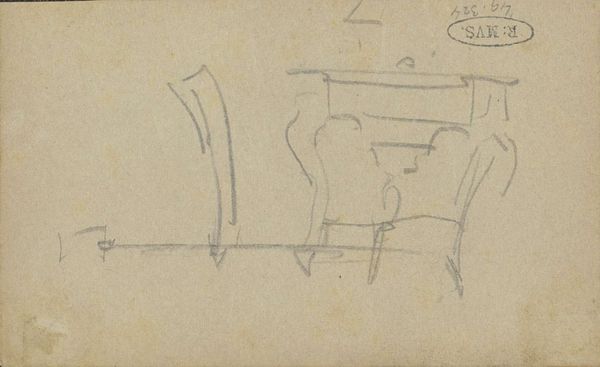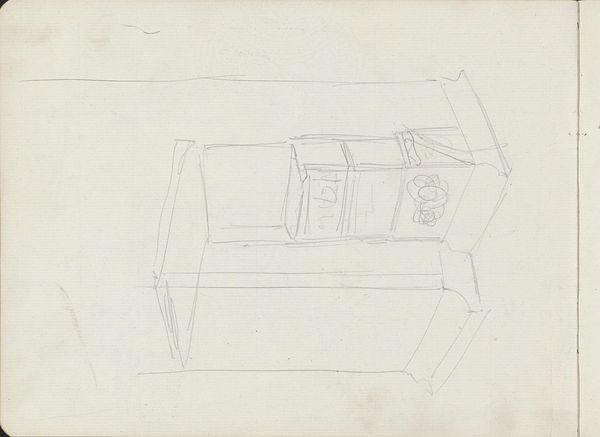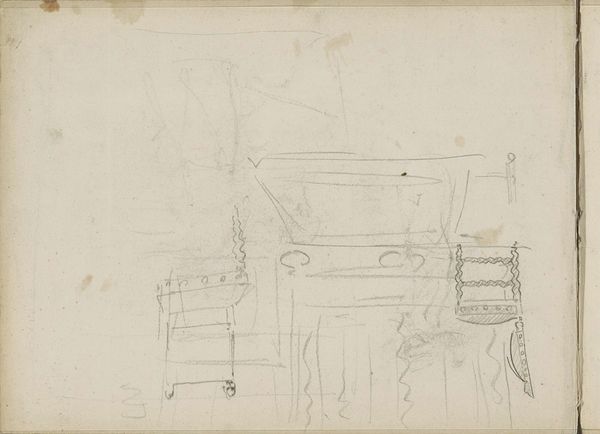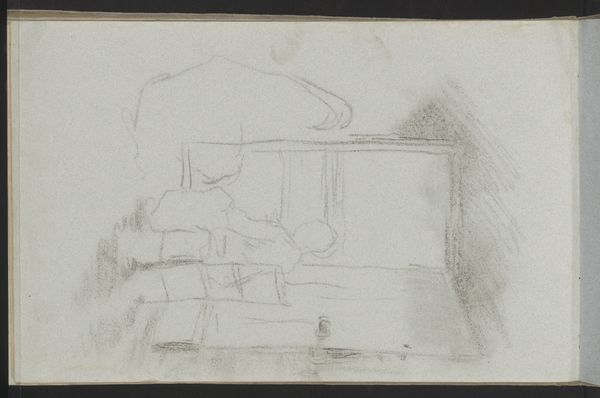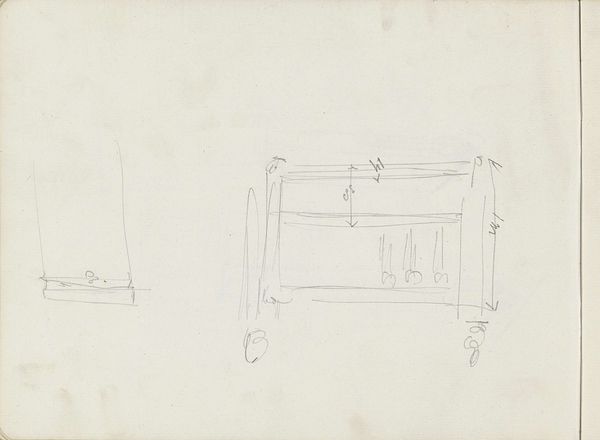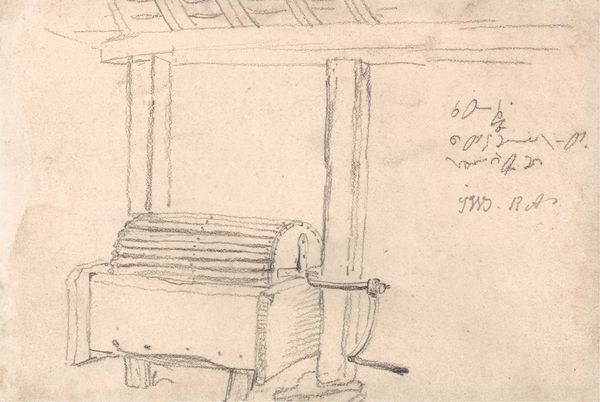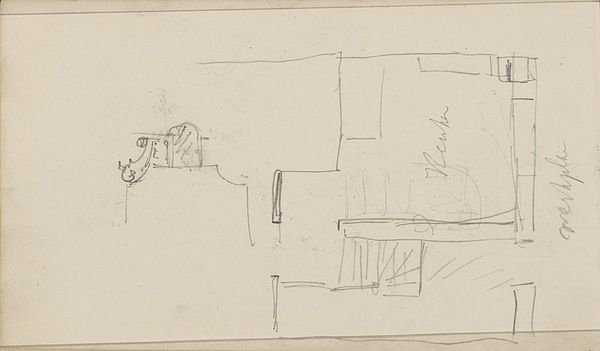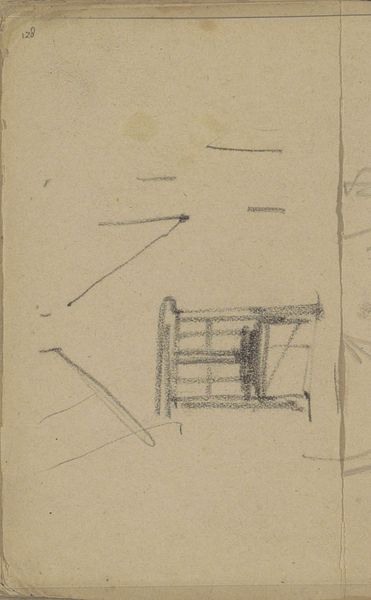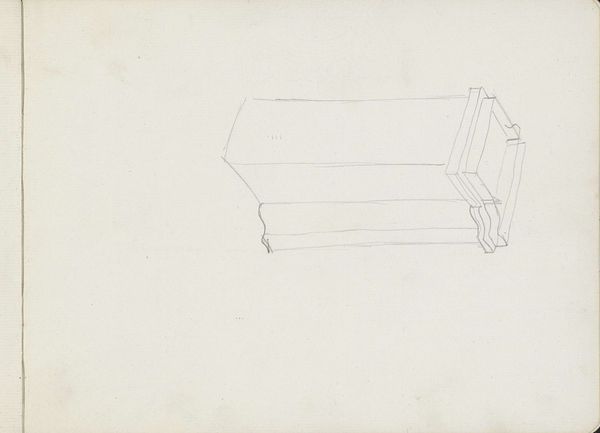
drawing, paper, pencil
#
drawing
#
amateur sketch
#
aged paper
#
toned paper
#
quirky sketch
#
sketch book
#
incomplete sketchy
#
paper
#
form
#
personal sketchbook
#
sketch
#
pencil
#
sketchbook drawing
#
quick sketch
#
sketchbook art
Dimensions: height 119 mm, width 142 mm
Copyright: Rijks Museum: Open Domain
Curator: This sketch, "Hemelbed, mogelijk zeventiende-eeuws," or "Four-Poster Bed, possibly seventeenth-century" by George Hendrik Breitner, dates from 1897. It’s a quick pencil drawing on paper, housed here at the Rijksmuseum. My initial impression is how fleeting it feels, like a whispered secret. Editor: Yes, there’s an undeniable intimacy. Given Breitner’s association with Amsterdam Impressionism and his chronicling of urban life, I immediately consider the context of domestic space and its representation within rapidly changing social structures. How did private life intersect with the burgeoning public sphere? Curator: Interesting point! I see it also from the perspective of the artist's hand, the rapid, almost frantic lines. You can practically feel Breitner sketching this, likely in a private moment. The immediacy of the pencil on paper highlights the labor and process of observation. Editor: Absolutely. Considering issues around class and labor, where does this bed sit? Is it a site of work or repose? The canopy implies a certain status, but the sketchy execution suggests it’s a study rather than a commission for a wealthy patron. Whose rest are we observing here, and who likely made the textile components of this bed? Curator: Those layers of production are key. But look closer – notice the texture of the paper itself. It seems aged, perhaps even recycled, adding another layer of material history to the artwork's narrative. The raw materials available shaped the production of the image itself. Editor: True. I keep returning to that hastily drawn canopy. Does it represent protection or confinement? The very act of sketching, especially within enclosed spaces, raises questions of gender roles, observation, and power dynamics in representing interior lives. Curator: Perhaps it's both protection and confinement. As for gender, without further evidence, focusing on the bed itself opens the potential for readings beyond purely gendered associations, to consider the economic production. Editor: Agreed. Broadening our perspective is vital to consider historical nuance. Curator: For me, returning to the visible layers of process reminds me how a seemingly simple sketch is dense with intention, revealing so much about art-making. Editor: And by viewing the artwork through its many social, historical, and material threads, we uncover so much more of ourselves.
Comments
No comments
Be the first to comment and join the conversation on the ultimate creative platform.
